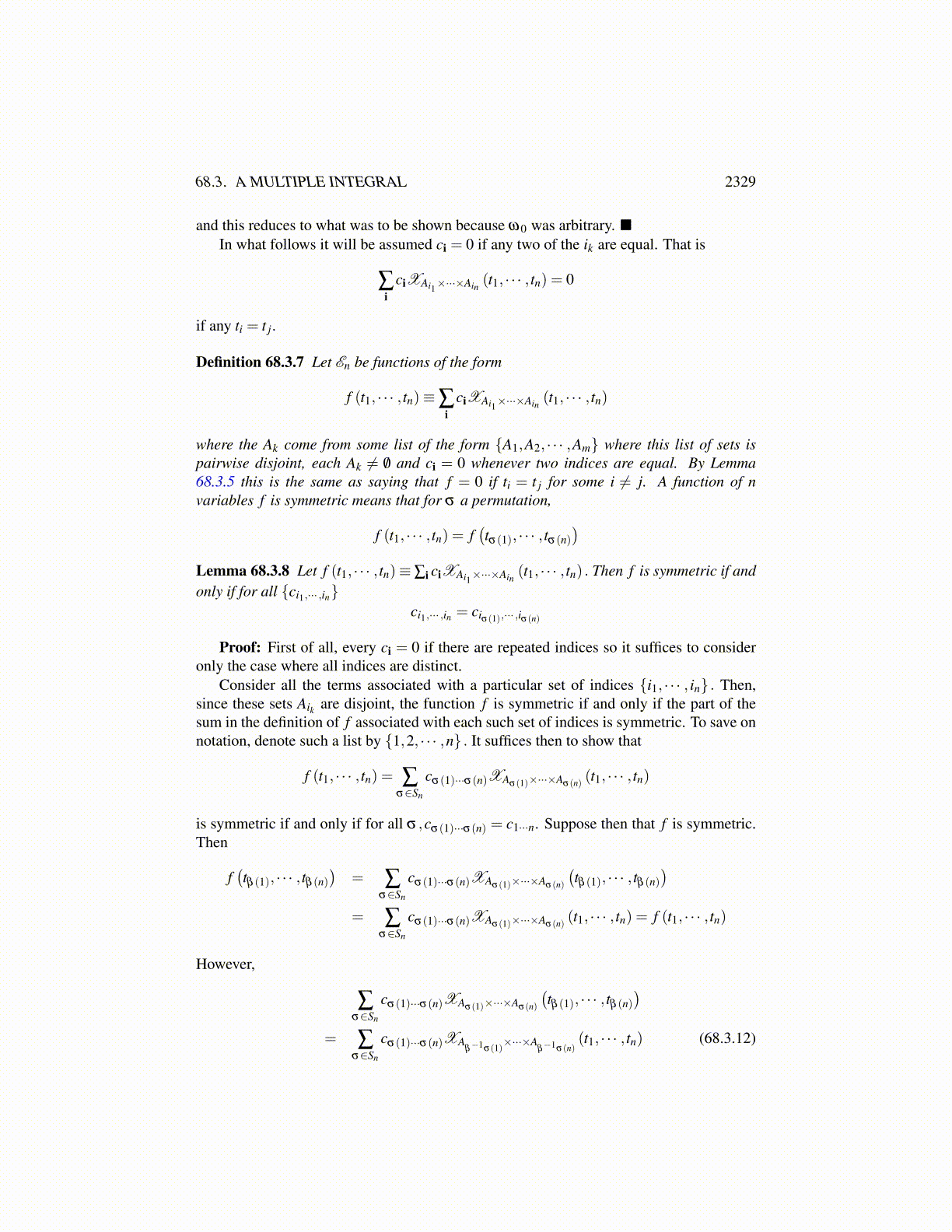
68.3. A MULTIPLE INTEGRAL 2329
This says that when you consider such a function ∑i ciXAi1×···×Ainwith the Ak pairwise
disjoint, then to say that it equals 0 whenever some ti = t j is to say that it is really a sum over
all permutations of n indices taken from {1, · · · ,m} . Thus there are(
mn
)n! = P(m,n)
possible non zero terms in this sum.
Lemma 68.3.6 Consider the set of all ordered lists of n indices from {1,2, · · · ,m} . Thustwo lists are the same if they consist of the same numbers in the same positions. We denoteby i or j such an index, i from {1, · · · ,m} and j from {1, · · · ,q}. Also let
{A1, · · · ,Am} ,{
B1, · · · ,Bq}
are two lists of pairwise disjoint Borel sets from T having finite Lebesgue measure. Alsosuppose
∑i
ciXAi1×···×Ain= ∑
jdjXB j1×···×B jn
Then
∑i
ci
n
∏k=1
W(Aik
)= ∑
jdj
n
∏k=1
W(B jk
)Proof: Suppose that n = 1 first. Then you have
∑i
ciXAi = ∑j
d jXB j (68.3.9)
where the sets {Ai} and{
B j}
are disjoint. Clearly
Ai ⊇ ∪ jAi∩B j (68.3.10)
ConsiderciXAi ,∑
jciXAi∩B j (68.3.11)
If strict inequality holds in 68.3.10, then you must have a point in Ai\ ∪ jAi ∩B j wherethe left side of ∑i ciXAi equals ci but the right side would equal 0. Hence ci = 0 andso ∑ j ciXAi∩B j = 0 which shows that the two expressions in 68.3.11 are equal. If Ai =∪ jAi∩B j, it is also true that the two expressions in 68.3.11 are equal. Thus
∑i
ciXAi = ∑i
∑j
ciXAi∩B j
Similar considerations apply to the right side. Thus
∑i
∑j
ciXAi∩B j = ∑j∑
id jXAi∩B j
∑i, j(ci−d j)XAi∩B j = 0